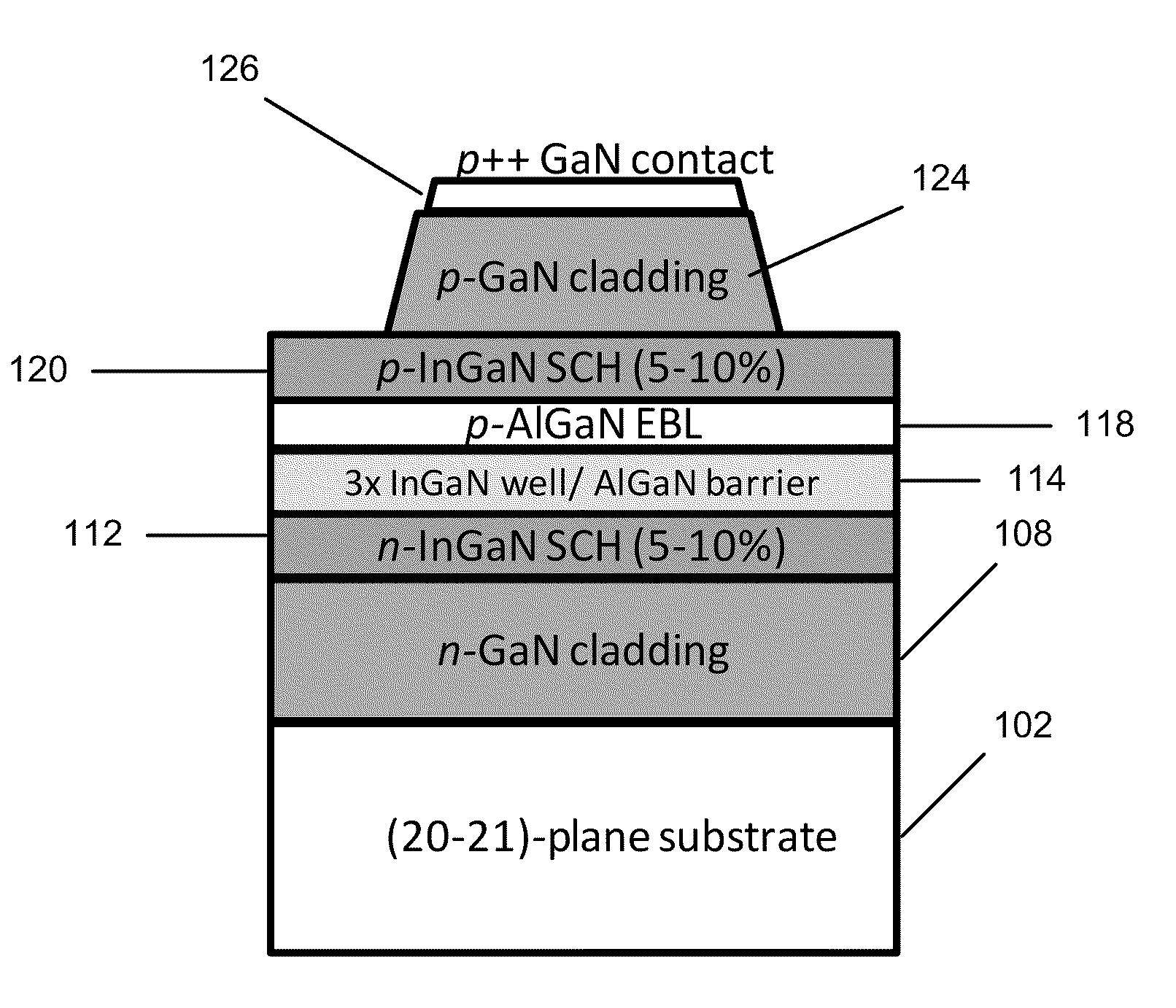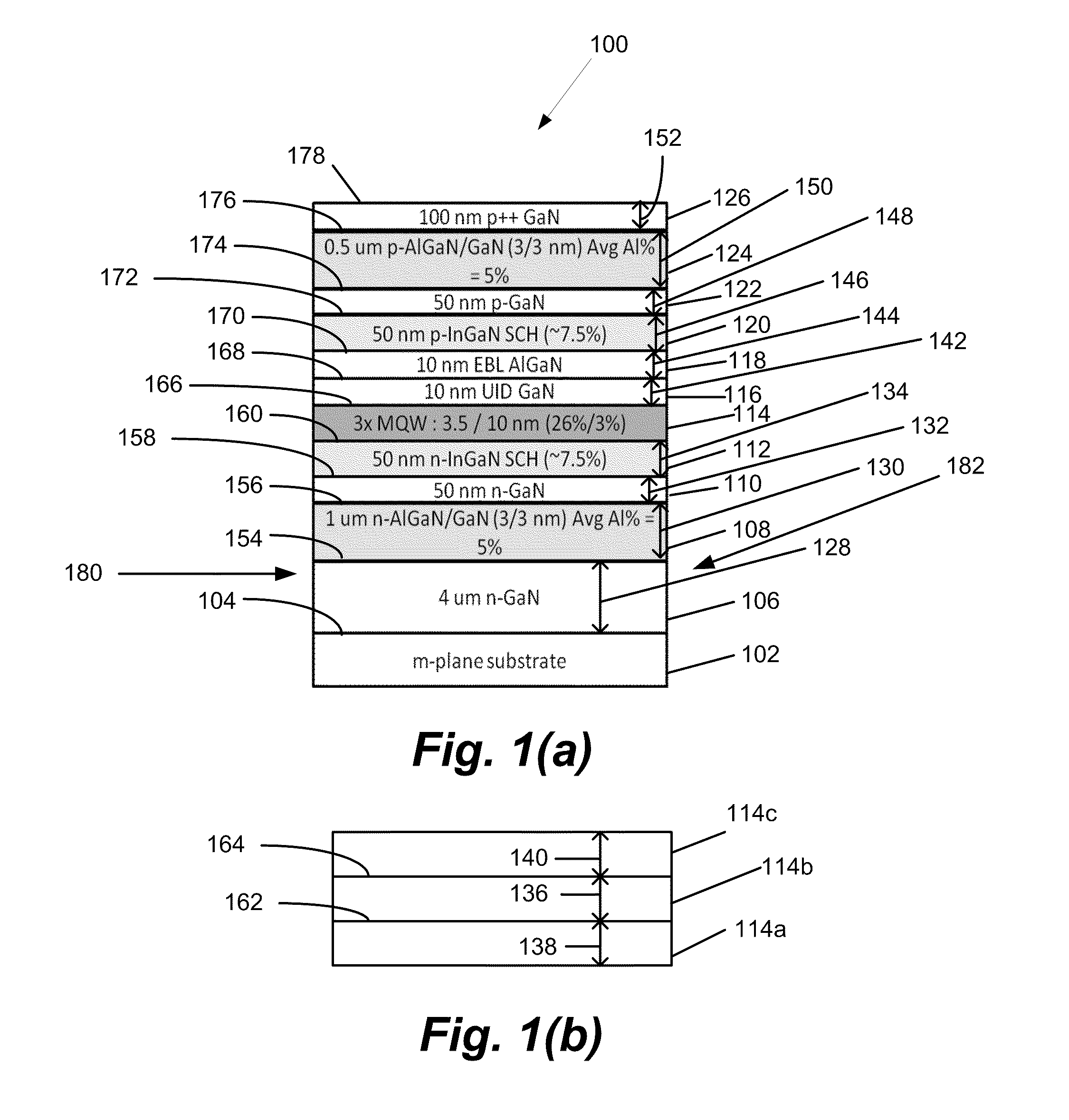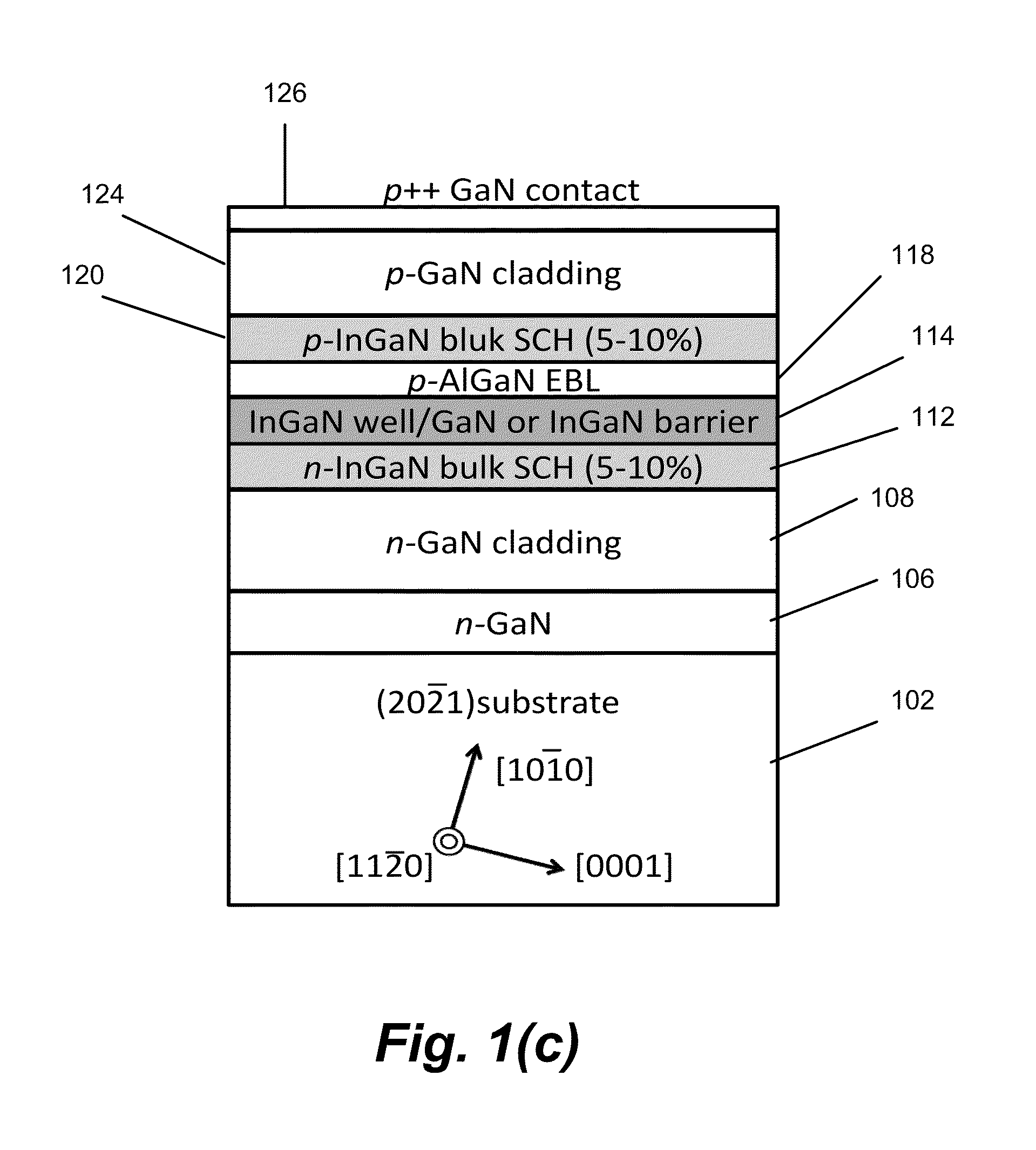LONG WAVELENGTH NONPOLAR AND SEMIPOLAR (Al,Ga,In)N BASED LASER DIODES
a laser diode and long wavelength technology, applied in the field of laser diodes, can solve the problems of low slope efficiency and miscut device results, and achieve the effects of reducing waveguide scattering, improving structural, electrical and optical properties of long wavelength lds, and maintaining smooth surface morphology
- Summary
- Abstract
- Description
- Claims
- Application Information
AI Technical Summary
Benefits of technology
Problems solved by technology
Method used
Image
Examples
Embodiment Construction
[0056]In the following description of the preferred embodiment, reference is made to the accompanying drawings which form a part hereof, and in which is shown by way of illustration a specific embodiment in which the invention may be practiced. It is to be understood that other embodiments may be utilized and structural changes may be made without departing from the scope of the present invention.
[0057]Nomenclature
[0058]GaN and its ternary and quaternary compounds incorporating aluminum and indium (AlGaN, InGaN, AlInGaN) are commonly referred to using the terms (Al,Ga,In)N, III-nitride, Group III-nitride, nitride, Al(1-x-y)InyGaxN where 0<x<1 and 0<y<1, or AlInGaN, as used herein. All these terms are intended to be equivalent and broadly construed to include respective nitrides of the single species, Al, Ga, and In, as well as binary, ternary and quaternary compositions of such Group III metal species. Accordingly, these terms comprehend the compounds AlN, GaN, and InN, as well as t...
PUM
 Login to View More
Login to View More Abstract
Description
Claims
Application Information
 Login to View More
Login to View More - R&D
- Intellectual Property
- Life Sciences
- Materials
- Tech Scout
- Unparalleled Data Quality
- Higher Quality Content
- 60% Fewer Hallucinations
Browse by: Latest US Patents, China's latest patents, Technical Efficacy Thesaurus, Application Domain, Technology Topic, Popular Technical Reports.
© 2025 PatSnap. All rights reserved.Legal|Privacy policy|Modern Slavery Act Transparency Statement|Sitemap|About US| Contact US: help@patsnap.com



